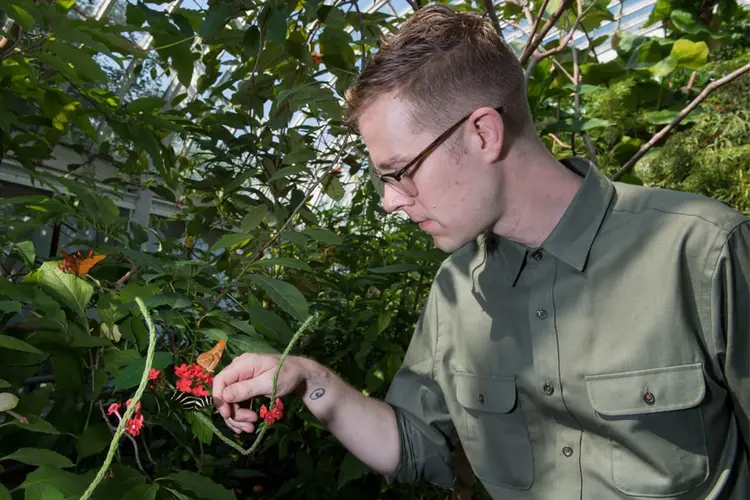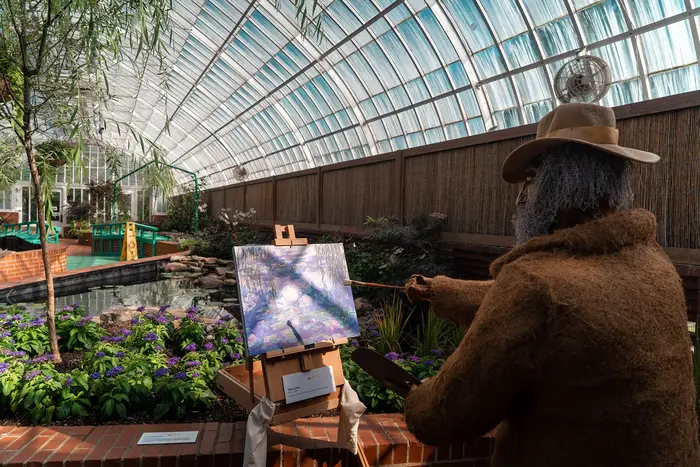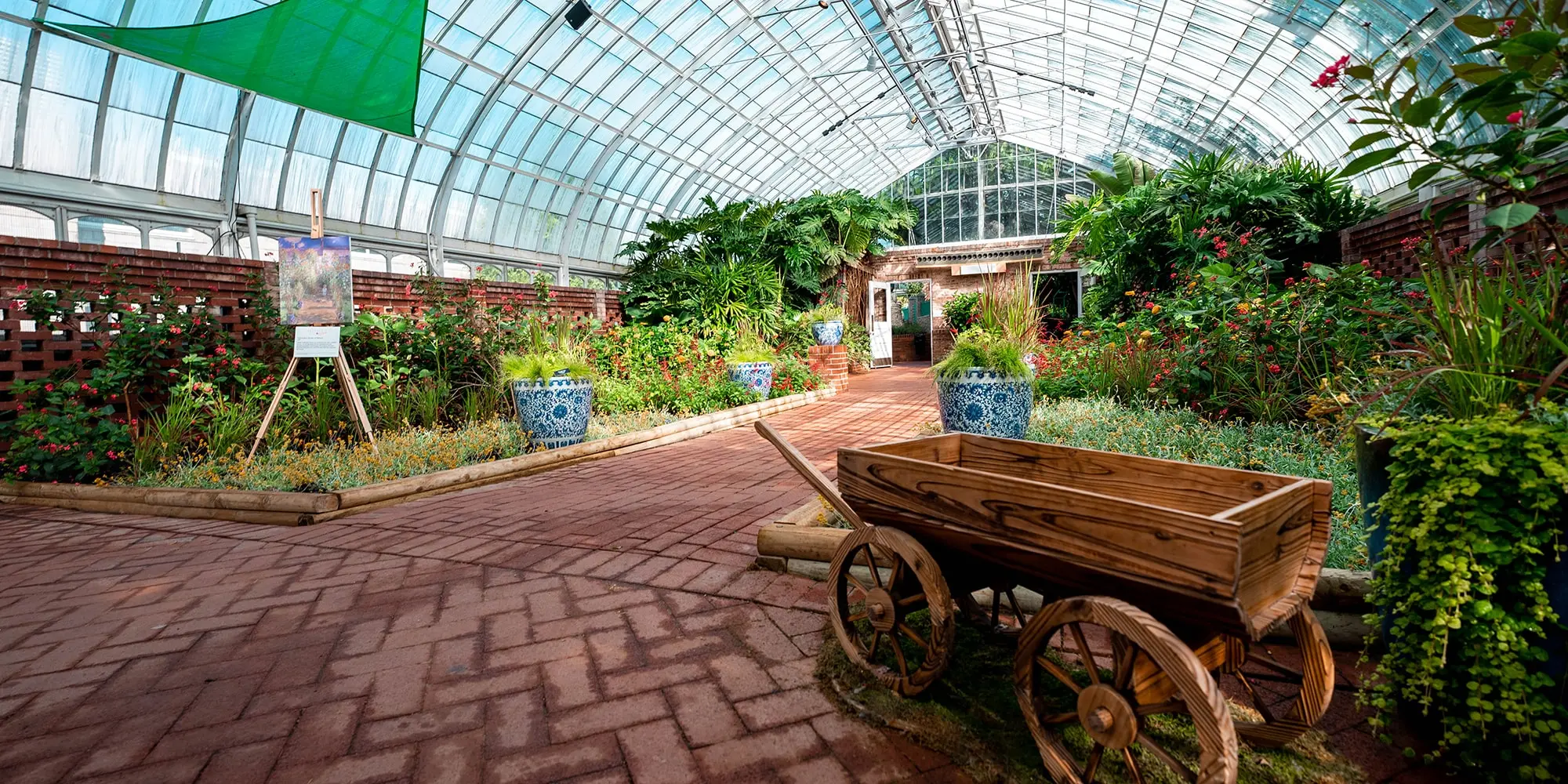
Students Match Soundscape Scores to 'Monet in Bloom'
Impressionistic compositions add element to Phipps Conservatory's Summer Flower Show
Media Inquiries
Collaboration blooms between Carnegie Mellon University and its neighbor, Phipps Conservatory and Botanical Gardens.
Students in the Experimental Sound Synthesis(opens in new window) course sculpted sounds to accompany delicate floral displays for Phipps' Summer Flower Show "Monet in Bloom." More than 100,000 visitors are expected to visit the immersive experience where each of the conservatory's rooms will be themed to different paintings by French impressionist Claude Monet and recreate portions of his own garden.
Through Sept. 25
9:30-5 p.m. daily and until 10 p.m. Fridays
Tickets must be reserved in advance.
https://www.phipps.conservatory.org/
"I think it's really cool, and when you walk through the conservatory each of the display rooms feel like a very different area," said Jordyn Melino, associate director of exhibits for Phipps and a 2007 graduate of CMU's Mellon College of Science(opens in new window).
Melino worked with the students and served as a liaison at Phipps. She said building partnerships between nonprofits and students created benefits for both groups.
"The students' projects added an additional layer to the visitor experience," she said. "It's also beneficial for them to have a real-life project with parameters that push them in different creative or technical ways."
Annie Hui-Hsin Hsieh(opens in new window), an assistant teaching professor in composition and music theory, teaches the course, which examines a variety of ways in which experimental music and sound works are made and perceived. The course also covers the software and hardware used to produce sound works and provides opportunities for creating interdisciplinary sound installations. The course attracts students from a variety of disciplines, and this is the third year the course has created installations for Phipps.
"This year is larger in scale in many ways," Hsieh said. "We outfitted all of the 'Monet in Bloom' display rooms in the conservatory this time compared to previous years."
Over 14 weeks, students proposed concepts then worked on the audio before installing equipment with the aid of Phipps' staff.
"We were learning as we went," Hsieh said. "Working in a public space with limited time, the students had to fix and figure out strategies immediately. It became a very fluid conversation."
To accompany "Luncheon Under the Canopy" in Phipps' East Room display that included a picnic spread, Xingyang Li, a fifth-year senior in materials science and engineering,�created a delightful melody incorporating the tinkling of forks and knives, pouring tea out of teapots, birds singing, wind blowing and other sounds.
In the Victoria room, Monet's "Studio Boat" floats in a pond surrounded by impatiens, begonias and other colorful blooms. Lalithashruthi Rajaraman, a junior in biological sciences(opens in new window) with a double minor in cognitive neuroscience and�sonic arts(opens in new window), created soothing water-inspired sounds as well as designed an interactive component by lighting up objects in the interior of the boat. It took some trial and error to get the effects she wanted.
"For example, the motion sensor I used to turn on the lights was pulled out by a child just a day or two after installation," she said. "I had to put a stake in the ground and wire the sensor to that, but then it wouldn't work anymore. It took three days to get the circuit together and working correctly."
This summer Rajaraman is using that problem solving mindset while working for Associate Professor Anna Fisher(opens in new window) in the Cognitive Development Lab(opens in new window) where she is helping to create procedures and analyze data from trial runs of data collection through a Summer Undergraduate Research Apprenticeship(opens in new window).
"We want to see if all the procedures work the way we want them to, and if they don't, we obviously have to go back and edit them," Rajaraman said.
She said while the course is over, she hopes to continue applying the skills she acquired.
"CMU is such an interdisciplinary school, I really want to be able to take that knowledge I learned in experimental sound synthesis and possibly apply it to what I'm learning in biology," she said.
Petra Floyd, who recently graduated with a Master's of Fine Arts(opens in new window) degree from the School of Art(opens in new window), worked on sounds in the Gallery room, inspired by "The Artist's Garden at V�theuil." Tall plantings of canna, everlasting and sunflowers fill the space that includes a wagon as a photo op for visitors. Floyd used old folk songs and recorded another CMU student, Audrey Renouf, speaking childlike French phrases to evoke the painting, which included Jean-Pierre Hoschedé, a young boy, and Michel Monet, the painter's son.
"I wanted to insert small moments of discovering discrete sounds in the space, like a child exploring a garden," she said. She added environmental sounds such as samples of popular music from the time as they might have been heard on a phonograph, which was invented shortly before the painting was completed in 1881.
To create her audio effects, she installed transducer speakers mounted on glass panels in the room to project her sounds and small speakers within the walls of the garden beds.
"With some suspension of belief, it'll transport the listener to a different day and time," Floyd said. She will continue to include sounds in her art practice. A recipient of the School of Art's Ken Meyer Professional Studio Development Award, she will be working in Pittsburgh and is developing a project that involves instruments archived at the Carnegie Museum of Natural History.
"During the pandemic I got to think about how sound and music were so grounding for me, and I found myself working with how sound, movement and dance are technologies that reconnect our histories with where we are," she said. "Being in Annie's class gave me more vocabulary — compositional and speaking — for making sounds and having finer control and understanding of tools."
The room Floyd worked in was very large, and a second project by Miles Scharff, who graduated with a bachelor of science and arts(opens in new window) degree in physics and music technology, complemented her project.
Scharff took Hsieh's course the previous year, but his senior capstone project involved designing and constructing a wave field synthesis array. Twenty-four speakers were mounted from the Gallery room's metal support structure using aircraft cables and focused in a way to combine soundwaves that listeners will experience differently depending on where they are standing in the room.
"The best way to think of them is like the ripples of pebbles in water, except the waves are in the air," Scharff said. His said his composition was similar to Monet's visual art in that the sounds are impressionistic and designed not to have one specific center of focus.
"This plays into the moments of discovery theme, but also into the way one can choose what to focus on," he said.
Experimental Sound Synthesis is part of CMU's Integrative Design, Arts and Technology (IDeATe(opens in new window)) network, which offers undergraduate minors and courses in nine areas that merge technology and creativity, such as sonic arts.
"It's really wonderful to see how students come into courses offered in IDeATe and they're very open minded. You seem them very quickly grasp all these strange concepts and use them and combine it with their own major or focus," Hsieh said.
— Related Content —
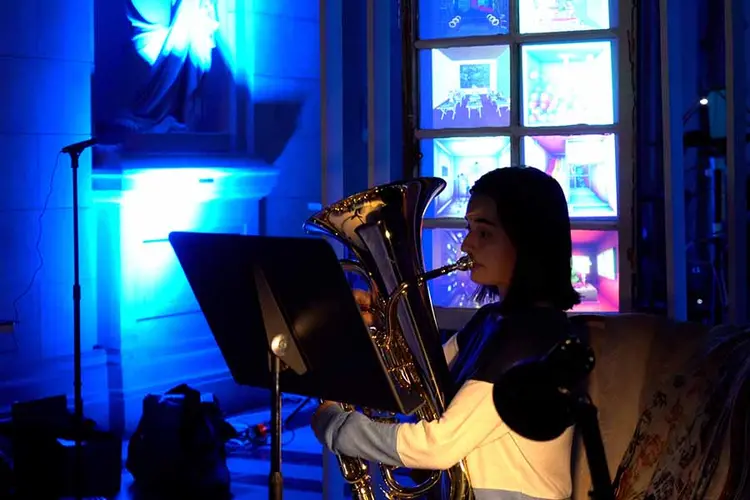
IDeATe Courses Explore Between Air and Waterlines
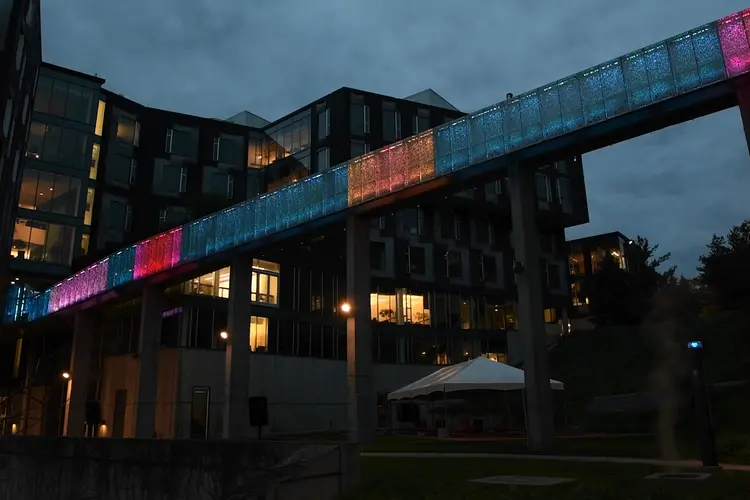
Light as Language
